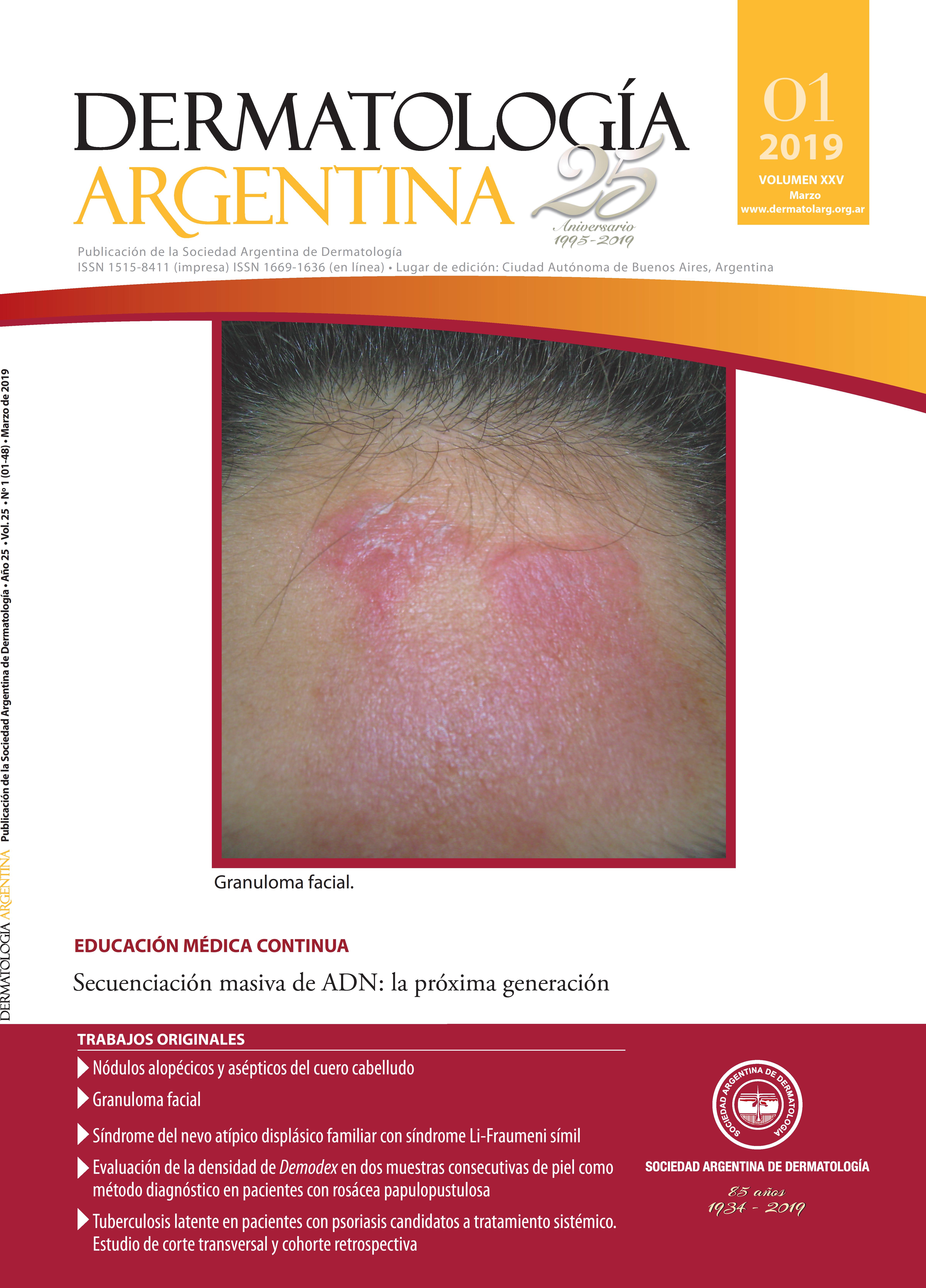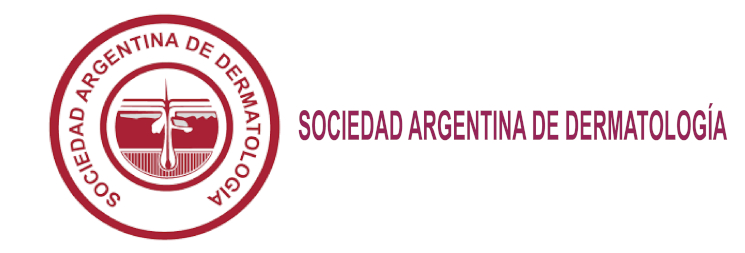Síndrome del nevo atípico displásico familiar con síndrome Li-Fraumeni símil
Palabras clave:
síndrome del nevo atípico displásico, evomatosis melanocítica con nevos displásicos, nevos displásicos, síndrome similar a Li-FraumeniResumen
Con la denominación de síndrome del nevo atípico displásico (SNAD) se hace referencia a pacientes que tienen múltiples nevos melanocíticos particulares (clínicamente atípicos e histopatológicamente displásicos) y con alta incidencia de melanoma. Se presenta el caso de una paciente con SNAD en una variante de pequeños elementos (tipo “cheeta”), cuyos dos hijos están afectados con un fenotipo diferente (de grandes elementos o clásico) y con una gran carga tumoral en ella y sus parientes cosanguíneos. Pese a ello, sus genes CDKN2A, BCRA1 y BCRA2 no están mutados. Se interpreta como un síndrome de superposición del SNAD con un síndrome similar a Li-Fraumeni.
Citas
I. Wang SQ, Kopf AW, Koenig K, Polsky D, et ál. Detection of melanomas in patients followed up with total cutaneous examinations, total cutaneous photography, and dermoscopy. J Am Acad Dermatol 2004;50:15-20.
II. Clark WH Jr, Reimer RR, Greene M, Ainsworth AM, et ál. Origin of familial malignant melanomas from heritable melanocytic lesions. ‘The B-K mole syndrome’. Arch Dermatol 1978;114:732-738.
III. Bras S, Gouveia AI, Teixeira AI, Soares Almeida LM. O nevo displásico. Revista SPDV 2016;74:770-784.
IV. Annessi G, Bono R, Sampogna F, Faraggiana T. Sensitivity, specificity, and diagnostic accuracy of three dermoscopic algorithmic methods in the diagnosis of doubtful melanocytic lesions: the importance of light brown structure less areas in differentiating atypical melanocytic nevi from thin melanomas. J Am Acad Dermatol 2007;56:759-767.
V. Elder DE, Goldman LI, Goldman SC, Greene MH, et ál. Dysplastic nevus syndrome: a phenotypic association of sporadic cutaneous melanoma. Cancer 1980;15;46:1787-1794.
VI. Lynch HT, Frichot BC, Lynch JF. Familial atypical multiple mole melanoma syndrome. J Med Genet 1978;15:352-356.
VII. Bartsch DK, Langer P, Habbe N, Matthai E, et ál. Clinical and genetic analysis of 18 pancreatic carcinoma/melanoma-prone families. Clin Genet 2010;77:333-341.
VIII. Mcinerney-Leo AM, Wheeler L, Sturm RA, Tan JH, et ál. Point mutation in p14ARF -specific exon 1β of CDKN2A causing familial melanoma and astrocytoma. Br J Dermatol 2018;178: e263-e264.
IX. Sorscher S, Desnoyers R, Ouyang K, Ramkissoon S. Li-Fraumeni versus pseudo Li-Fraumeni syndrome: Key insights for interpreting next-generation sequencing reports in patients with suspected cancer predisposition syndromes. Oncologist 2017;22:1084-1085.
X. Giavedoni P, Ririe M, Carrera C, Puig S, et ál. Familial melanoma associated with Li-Fraumeni syndrome and atypical mole syndrome: total-body digital photography, dermoscopy and confocal microscopy. Acta Derm Venereol 2017;97:720-723.
Descargas
Publicado
Número
Sección
Licencia
El/los autor/es tranfieren todos los derechos de autor del manuscrito arriba mencionado a Dermatología Argentina en el caso de que el trabajo sea publicado. El/los autor/es declaran que el artículo es original, que no infringe ningún derecho de propiedad intelectual u otros derechos de terceros, que no se encuentra bajo consideración de otra revista y que no ha sido previamente publicado.
Le solicitamos haga click aquí para imprimir, firmar y enviar por correo postal la transferencia de los derechos de autor













